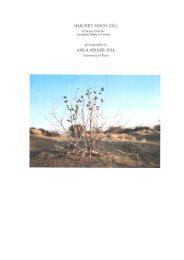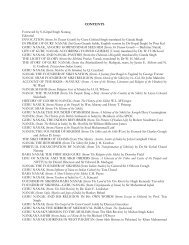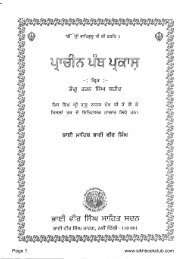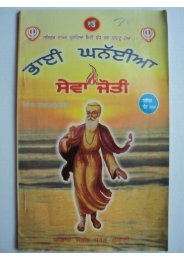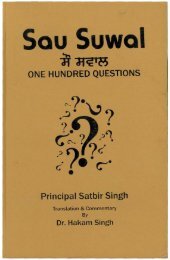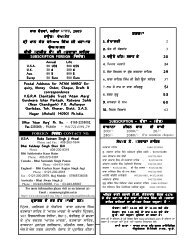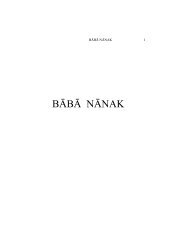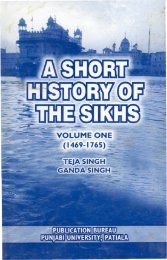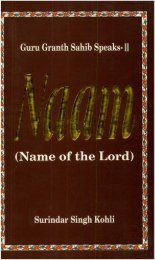You also want an ePaper? Increase the reach of your titles
YUMPU automatically turns print PDFs into web optimized ePapers that Google loves.
communalism and the Partition of the country would not have<br />
taken place. In that case, we would have remained Punjabis in<br />
the same way as Ranjit Singh had left us. But alas! With our<br />
modern education, everything got changed, so much so that<br />
today there are either Hindus or Muslims or the Sikhs in Punjab<br />
but no Punjabis. Perhaps through the modern educational<br />
process we have learnt less and unlearnt more. At least we have<br />
unlearnt the virtue of being truly civilized which means true,<br />
sensitive and tolerant human beings, wedded to a higher Punjabi<br />
sense of solidarity and togetherness.<br />
VII.<br />
A brief discussion of the imagery used by Shah Mohammed<br />
is perhaps called for. The metaphors and similes used by Shah<br />
Mohammed are patently Indian, if not Hindu. These figures of<br />
speech are used by poets to compress aeons of experience in<br />
a few words. These bring before the readers' eyes a whole drama<br />
being enacted or an entire episode being narrated just in one<br />
word. The storehouse of such allusions inevitably are the Indian<br />
classics like the Ramayana and the Mahabharata. Normally, a<br />
high-born Muslim, connected with the Qureshi clan of Arabia,<br />
Shah Mohammed, would have used those figures of speech from<br />
the Islamic sources which means the Persian and Arabic classics.<br />
But that is not the way Shah Mohammed goes about his task.<br />
He had no use for bamboozling the reader or his listener<br />
with his Himalayan scholarship or the knowledge of foreign<br />
languages. He, therefore, talks in the idiom of the people so that<br />
the import of his usage becomes instantly clear. It is such things<br />
only which underline the rootedness of the poet to the soil which<br />
has nurtured him. However, it is difficult to imagine that an<br />
Indian Muslim could have become so much Indianised or, more<br />
correctly speaking, indigenised himself to this extent that almost<br />
all his metaphors and similes are taken from local sources. Well,<br />
it does not happen even today when there is so much of lip<br />
sympathy for the local idiom. And anybody who achieves it can<br />
(47)



